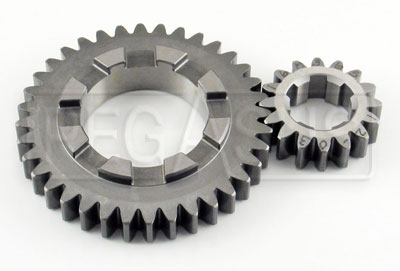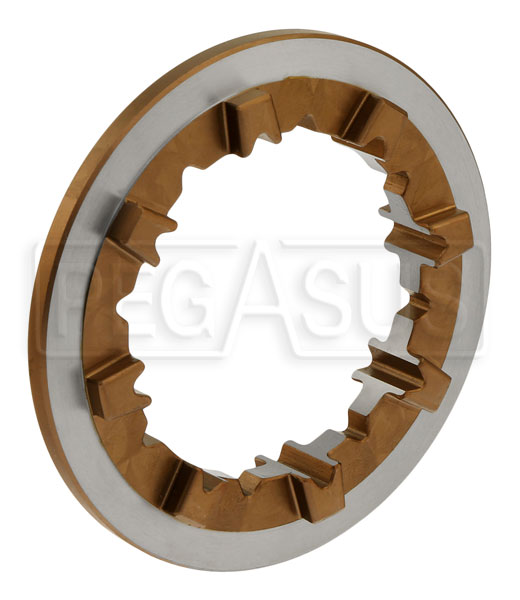I had a conversation at the Glen with an ex 3 day grad and a newer driver of the series. Then, the discussion became 4 people large, etc. I just got an email from a historic racing guy I coach about it. So, I am going to put in my 2 cents about it. First of all, I do believe that there is a small misconception about what is really taking place inside the gearbox. We've all said it in short hand, but you are not JUST matching the rpm's of the engine and rear tire. You are matching the rpm's of the motor/new found lower gear set/rear tire. So, in other words, I do not believe that you are trying to match input shaft (connected to clutch/motor) and the output shaft. I believe that we are trying to match the actual gear meshing speeds. I am only talking very old style non synchronized and non dog ringed gearbox's. You literally have to come to a stop to get it in some gear if you do not match these speeds. I got to drive one of my Grandfathers 12 speed Freightliner when I was very young. It is a delicate procedure even with an 80,000 lb rig. He would demonstrate to us by shifting with his right hand holding a 1/2 full coffee cup, and bumping it with his wrist into the higher/lower gear without spilling a drop. Here are the steps again.
Full throttle, down the straight and into the brake zone, you do your version of threshold braking and then....
1-Brake
2-Clutch in
3-Bump to neutral
4-Clutch out (this has to take place to spin the input shaft!)
5-Blip 4,500-5,000 is a generic number and works very well in most boxes
6-Clutch back down/in
7-Downshift to lower gear
8-Clutch out
9-Start thinking about trail braking at this point
You Should have been on the brake the entire time of this downshift and even after it. A lot of guys will have the tendency to release the brake once the downshift is complete. You are not done braking. The tire wall does not care what gear the car is in! Use the brakes!
Here's the quicker version of what I just discussed. I am ok with teaching this to certain guys in the schools.
1-Brake
2-Bump (to neutral) You can easily bump it out of gear with 0 force.
You really need to time it just as you let off, and not after, because you will get some negative torque from the engine braking.
3-Blip
4-Clutch in
5-Downshift
6-Clutch out.
What we did here was save the step of wasting time with a clutch in/out just to get it to neutral. I believe this is a wasteful step. The reason I still had the "guy" use the clutch on the downshift is simple. We are still learning and there will be some messy downshifts and soft blips and the clutch will absorb some of the mistakes.
Full race "double clutch"-
1-Brake
2-Bump (to neutral)
3-Blip
4-Pause for 2 milliseconds ( I consider this a step in the downshift)
5-Stick it in lower gear.
You do NOT need to use the clutch to downshift a true non synchomesh or dog ring gear box. It is, however, a lot easier on the car if you use the clutch. A clutch is cheaper than a broken gearbox or worse, and over reved engine. The clutch just softens the mistakes. But the moral of the story is that you MUST blip the throttle with the box in neutral in order to internally match the gear set speeds.
Next, let me try to show you the difference between the gearbox's.
Fully Synchronized gearbox such as a modern day manual transmission. You could order a syncho gearbox in 1949 I believe in the US. It could have been earlier. I don't know.
1-The Dog ring gearbox. The dog rings engaged the gear set. When you hear that "Kapow" when you stick it into gear, and the whole car shakes, and the mechanics flip you off, this is what you are hearing, not the gear engagement itself. Can you see the little triangular pieces? Those are dogs. The driving shaft has an interlocking set that goes into those, hense turning the gear. I used Pegasus's pictures. Thanks Pegasus. One last word of advice. When you drive an RT 2000 car with our Sequential gear box, do NOT ever rev the motor to engage 1st or reverse gear. I don't need to point fingers, but if you guys want, come to grid just before a race, and I can show you how many people don't even know how to put a car into gear, much less shift properly. If you rev the motor and put it into gear to get it to mesh, you are a dog killer as Bruce MacInnes would say. We mean dog ring. If you can't get the car to go into neutral because the dog teeth are not lined up, simply let the car idle, pump the clutch once. Wait a second, and pull it back to first. It just needs to reshuffle the teeth. Please don't ever rev a car up to put it into gear. If you thought it was in gear, and the motor revved up, and it was not in gear, or even kicked out of gear, count to 5, and then pull back on the shifter. This could decide if you finish the race or take yourself out because of a poor 1st gear engagement.

Here is the dog ring that engages the gear. The shifting forks slide these dogs back and forth.

Synchronized gear set. The shift forks will slide the synchos, much like they slide the dog rings. Same concept.

You can see the little "mini gear" looking fingers. They will help start the meshing into the new gear be it up or down shifting. Even if the synchos are worn to death, meshing is still much easier because of the Helical cut to the gear teeth alone.